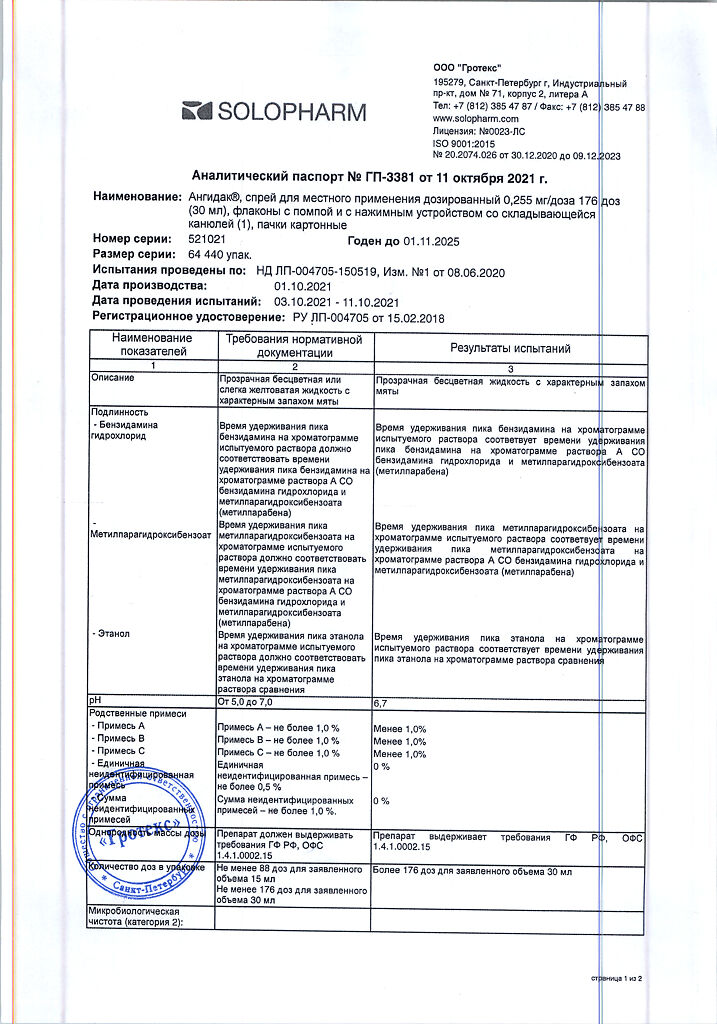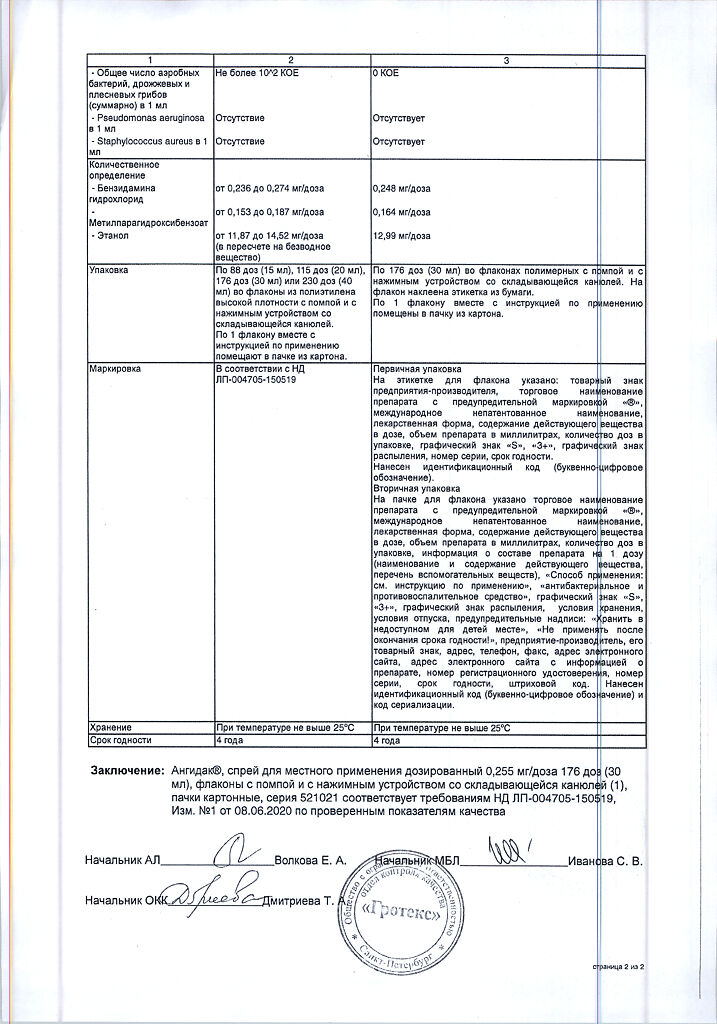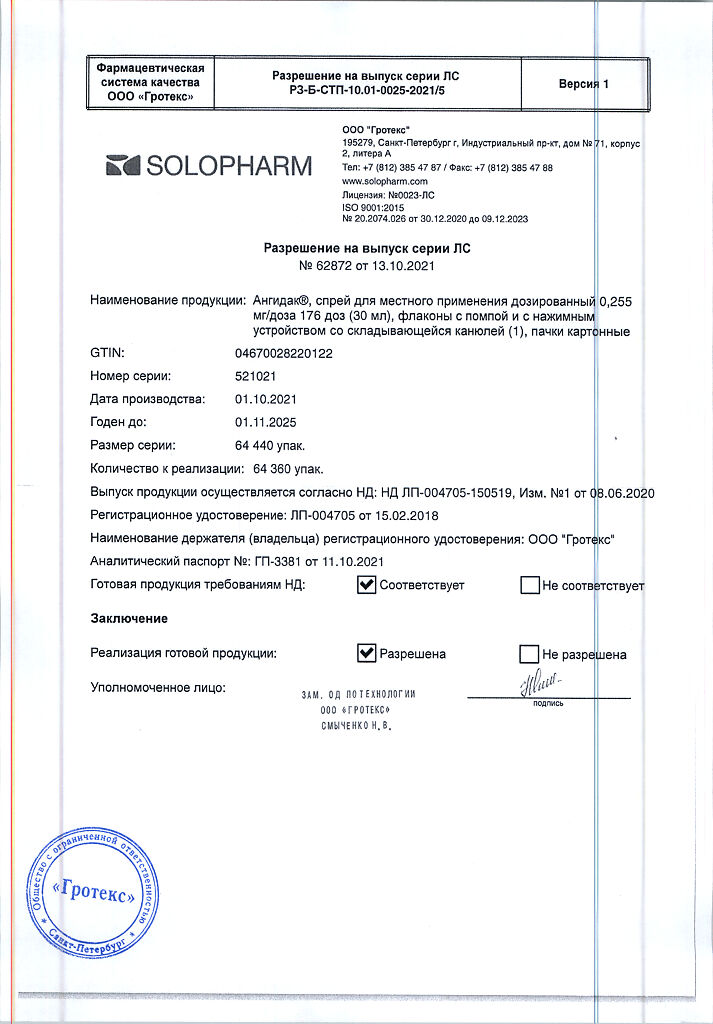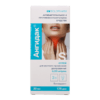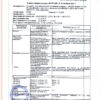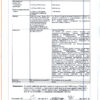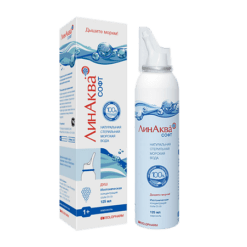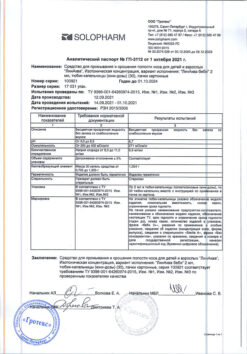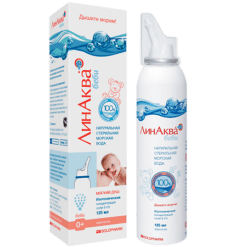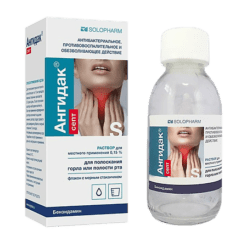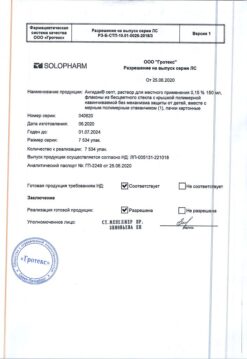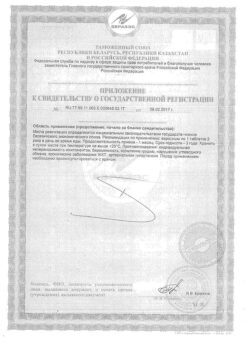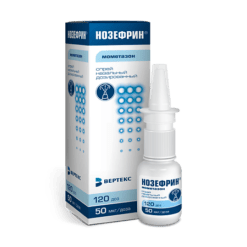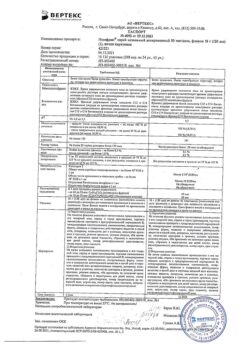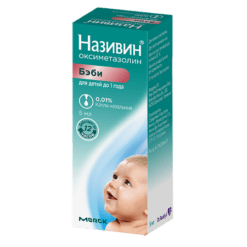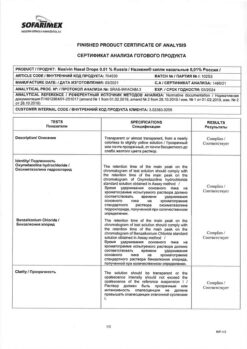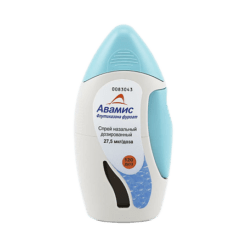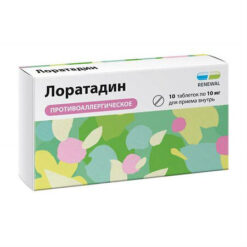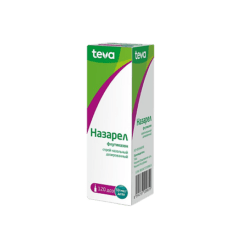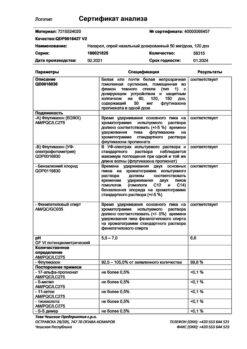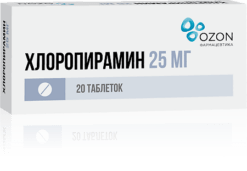No products in the cart.
Angidac, spray 0.255 mg/dose 30 ml
€11.64 €10.18
Description
Pharmacodynamics
Benzidamine is a non-steroidal anti-inflammatory drug, belongs to the group of indazoles. It has anti-inflammatory and local analgesic effect, has antiseptic action against a wide range of microorganisms, restores microcirculation. The mechanism of action of the drug is associated with stabilization of cell membranes and inhibition of prostaglandin synthesis.
Benzidamine has antibacterial and specific antimicrobial action due to rapid penetration through the membranes of microorganisms with subsequent damage of cell structures, disruption of metabolic processes and cell lysosomes.
It has antifungal action against Candida albicans. Causes structural modifications of the cell wall of fungi and their metabolic chains, thus preventing their reproduction, which was the basis for the use of benzidamine in inflammatory processes in the oral cavity, including infectious etiology.
Pharmacokinetics
When used topically, the drug is well absorbed through mucous membranes and penetrates inflamed tissues and is found in blood plasma in amounts insufficient to produce systemic effects.
The drug is excreted mainly by the kidneys, as inactive metabolites or conjugation products.
Indications
Indications
Symptomatic treatment of pain syndrome of inflammatory diseases of the oral cavity and ENT organs (of various etiologies):
gingivitis, glossitis, periodontal disease, stomatitis (including after radiation and chemotherapy);
pharyngitis, laryngitis, tonsillitis;
candidiasis of the oral mucosa (as part of combination therapy);
calculous inflammation of the salivary glands;
after surgical interventions and injuries (tonsillectomy, jaw fractures);
after treatment and tooth extraction.
For infectious and inflammatory diseases requiring systemic treatment, it is necessary to use the drug as part of combination therapy.
Pharmacological effect
Pharmacological effect
Pharmacodynamics
Benzidamine is a non-steroidal anti-inflammatory drug that belongs to the indazoles group. It has an anti-inflammatory and local analgesic effect, has an antiseptic effect against a wide range of microorganisms, and restores microcirculation. The mechanism of action of the drug is associated with the stabilization of cell membranes and inhibition of prostaglandin synthesis.
Benzidamine has an antibacterial and specific antimicrobial effect due to rapid penetration through the membranes of microorganisms with subsequent damage to cellular structures, disruption of metabolic processes and cell lysosomes.
Has antifungal effect against Candida albicans. Causes structural modifications of the cell wall of fungi and their metabolic chains, thus preventing their reproduction, which was the basis for the use of benzydamine for inflammatory processes in the oral cavity, including infectious etiology.
Pharmacokinetics
When applied topically, the drug is well absorbed through the mucous membranes and penetrates into inflamed tissues; it is found in the blood plasma in quantities insufficient to obtain systemic effects.
Excretion of the drug occurs mainly by the kidneys, in the form of inactive metabolites or conjugation products.
Special instructions
Special instructions
When using the drug, hypersensitivity reactions may develop. In this case, it is recommended to stop treatment and consult a doctor to prescribe appropriate therapy.
In a limited number of patients, the presence of ulcers in the throat and mouth may indicate a more serious condition. If symptoms persist for more than 3 days, you should consult your doctor.
The use of the drug is not recommended in patients with hypersensitivity to acetylsalicylic acid or other non-steroidal anti-inflammatory drugs. The drug should be used with caution in patients with a history of bronchial asthma due to the possibility of developing bronchospasm while taking the drug. The drug contains parahydroxybenzoates, which can cause allergic reactions. The drug contains 13.2 mg of ethanol per dose (one injection). Ethanol content in a single dose:
– for adults (including elderly patients) and children over 12 years old – 52.8 – 105.6 mg;
– for children from 6 to 12 years old – 52.8 mg;
– for children from 3 to 6 years old – 13.2 mg of ethanol for every 4 kg of body weight, but not more than 52.8 mg (maximum single dose).
Impact on the ability to drive vehicles and machinery
Does not affect the ability to drive vehicles and operate machinery.
Active ingredient
Active ingredient
Benzydamine
Composition
Composition
1 dose
benzydamine hydrochloride
0.255 mg
Excipients:
ethanol 95% – 13.89 mg,
glycerol (glycerin) – 8.52 mg,
methyl parahydroxybenzoate – 0.17 mg,
menthol flavoring – 0.051 mg,
sodium saccharinate – 0.041 mg,
sodium bicarbonate – 0.019 mg,
polysorbate 20 – 0.009 mg,
sodium hydroxide solution 1 M or hydrochloric acid solution 0.5 M – up to pH 5.0-7.0,
water for injection – up to 170 µl.
Contraindications
Contraindications
Hypersensitivity to benzydamine or other components of the drug;
children under 3 years of age.
With caution
Hypersensitivity to acetylsalicylic acid or other non-steroidal anti-inflammatory drugs, bronchial asthma (including a history).
Side Effects
Side Effects
Classification of the incidence of side effects according to the World Health Organization (WHO):
Very often – > 1/10.
Often – from > 1/100 to < 1/10.
Uncommon – from > 1/1000 to < 1/100.
Rarely – from > 1/10000 to < 1/1000.
Very rare – < 1/10000.
Frequency unknown – cannot be estimated from available data.
Within each group, adverse effects are presented in order of decreasing severity.
Local reactions:
rarely – dry mouth, burning sensation in the mouth; frequency unknown – feeling of numbness in the mouth.
Allergic reactions:
infrequently – photosensitivity; rarely – hypersensitivity reactions, skin rash, itching; very rarely – angioedema, laryngospasm; frequency unknown – anaphylactic reactions.
If any of the side effects indicated in the instructions worsen, or any other side effects not listed in the instructions are noted, you should immediately inform your doctor.
Interaction
Interaction
No interaction studies have been conducted with other drugs.
Overdose
Overdose
Currently, no cases of drug overdose have been reported.
Symptoms: when using the drug in accordance with the instructions for use, an overdose is unlikely. If the drug is accidentally ingested, the following symptoms are possible: vomiting, abdominal cramps, anxiety, fear, hallucinations, convulsions, ataxia, fever, tachycardia, respiratory depression.
Treatment: symptomatic; empty the stomach by inducing vomiting, or flush the stomach using a gastric tube (under medical supervision); provide medical supervision, supportive care and necessary hydration. No antidote is known.
Storage conditions
Storage conditions
At a temperature not exceeding 25 °C. Keep out of the reach of children.
Shelf life
Shelf life
4 years.
Manufacturer
Manufacturer
Grotex LLC, Russia
Additional information
| Shelf life | 4 years. |
|---|---|
| Conditions of storage | At a temperature not higher than 25 ° C. Keep out of reach of children. |
| Manufacturer | Grotex Ltd, Russia |
| Medication form | dosed topical spray |
| Brand | Grotex Ltd |
Other forms…
Related products
Buy Angidac, spray 0.255 mg/dose 30 ml with delivery to USA, UK, Europe and over 120 other countries.


